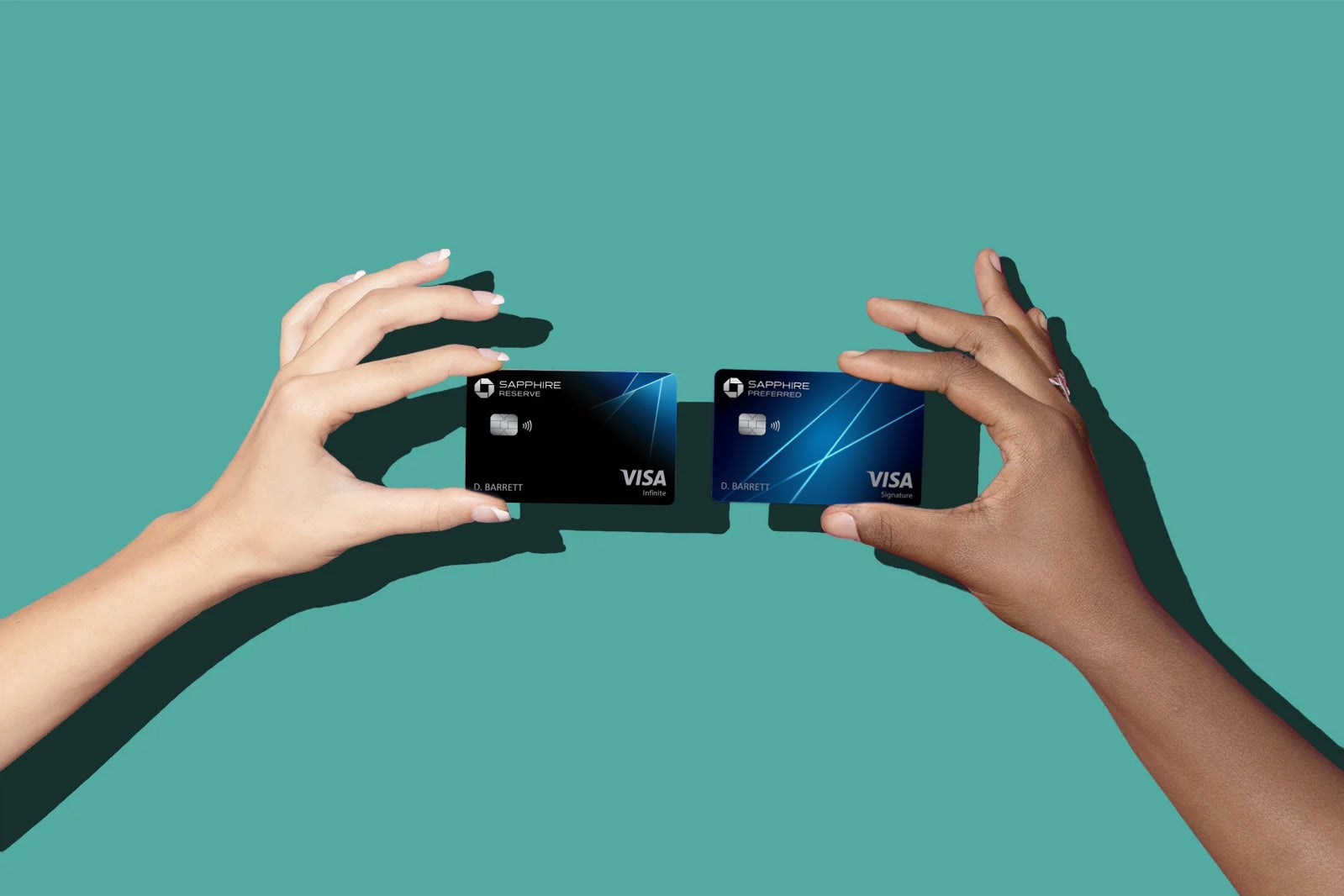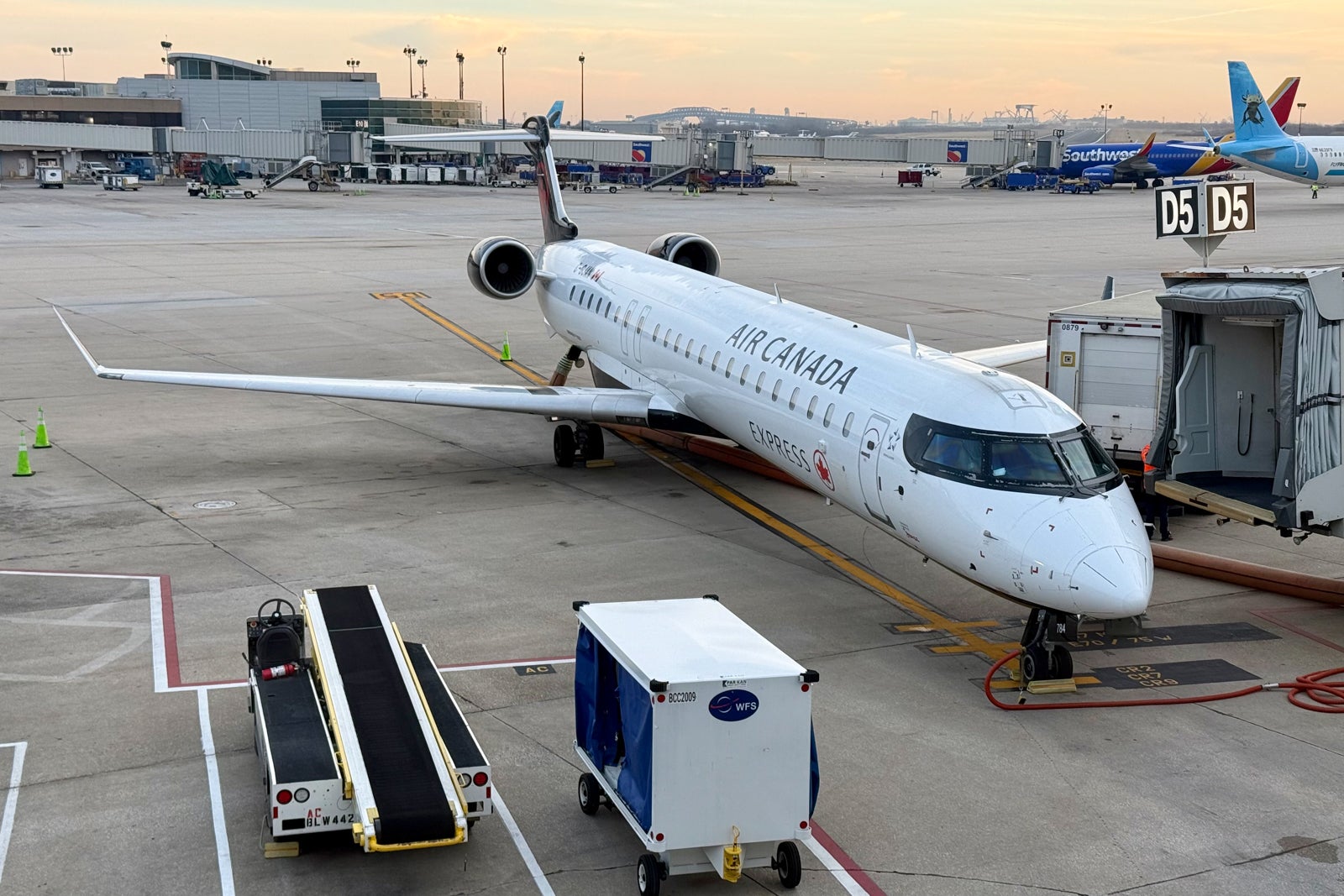Chase Sapphire Preferred vs. Chase Sapphire Reserve

The Chase Sapphire Preferred® Card (see rates and fees) and the Chase Sapphire Reserve® (see rates and fees) are two of the most talked about travel rewards credit cards on the market.
That’s thanks to the valuable Chase Ultimate Rewards program, the cards’ top-notch benefits and each card’s great travel protections. But which one is the best match for you?
You might assume that the Chase Sapphire Reserve — with a higher annual fee and more luxury benefits — is always the better choice. It is a higher-tier card, but that may not necessarily mean it’s your best option. Depending on your spending habits, travel goals and existing credit card lineup, the Sapphire Preferred could be the more attractive option for your wallet.
Highest-ever offer: Earn 100,000 bonus points with the Chase Sapphire Preferred Card after spending $5,000 on purchases within the first three months of account opening.
So, let’s compare the two cards below to help you make the best decision.
Chase Sapphire Preferred vs. Reserve comparison
|
Card |
Chase Sapphire Preferred Card |
Chase Sapphire Reserve |
|---|---|---|
| Annual fee | $95 | $550 |
| Earning rates |
|
|
| Welcome bonus | Earn 100,000 bonus points after spending $5,000 on purchases in the first three months of account opening. | Earn 60,000 bonus points after spending $5,000 on purchases in the first three months of account opening. |
| Value of Ultimate Rewards travel redemptions | 1.25 cents | 1.5 cents |
| Key benefits |
|
|
| Lounge access | None |
|
| Authorized user annual fee | $0 | $75 for each user |
*Excludes Wait & Save, bike, and scooter rides. Maximum statement credit is up to $120 annually.
Chase Sapphire Preferred vs. Reserve welcome bonus
Currently, the Sapphire Preferred is offering an elevated welcome bonus of 100,000 points after spending $5,000 on purchases in the first three months from account opening.
The Sapphire Reserve offers 60,000 points after spending $5,000 in the first three months from account opening.
Winner: Sapphire Preferred. It’s offering 40% more points — but you need to spend an extra $1,000 to earn the bonus.

Daily Newsletter
Reward your inbox with the TPG Daily newsletter
Join over 700,000 readers for breaking news, in-depth guides and exclusive deals from TPG’s experts
Related: The best time to apply for these Chase cards based on their offer history
Chase Sapphire Preferred vs. Reserve benefits
The difference in benefits is where the Sapphire Reserve shines. It offers:
Plus, it gets you access to The Edit by Chase Travel, which includes benefits like complimentary daily breakfast for two and a $100 on-property credit for each booking.
Meanwhile, the Sapphire Preferred still offers a handful of perks:
- An annual $50 hotel credit when booking through Chase Travel
- An annual 10% anniversary points bonus
- A DoorDash DashPass subscription for at least one year (activate by Dec. 31, 2027) and one $10 nonrestaurant credit each month
The Sapphire Reserve’s annual travel credit is much more flexible than the Sapphire Preferred’s hotel credit. With the Sapphire Reserve’s credit, you’ll receive $300 in statement credits each account anniversary year for a broad list of travel purchases. These are automatically applied to your account; you don’t need to go through a portal. The Sapphire Preferred’s hotel credit must be applied to a stay booked through Chase Travel, which makes it more restrictive.
Plus, the Sapphire Reserve provides access to Chase lounges and comes with a Priority Pass Select membership, which grants access to more than 1,700 lounges worldwide. You won’t receive any lounge access with the Sapphire Preferred.
While both cards have impressive travel and purchase protections, the Sapphire Reserve’s protections are more substantial in some areas. The Sapphire Reserve provides emergency evacuation and transportation coverage, roadside assistance and emergency medical and dental benefits that the Sapphire Preferred does not offer.
And if you maximize the DoorDash credits, you’ll get $15 more value each month (or $180 annually) from the Reserve compared to the Preferred.
Winner: Sapphire Reserve. The travel credit, airport lounge access and superior travel protections are hard to beat for frequent travelers.
Related: Is the Chase Sapphire Reserve worth the annual fee?
Earning points with the Sapphire Preferred vs. Reserve
The cards’ earning rates differ slightly, with the Sapphire Reserve earning points at higher rates than the Sapphire Preferred across some notable categories.
Here’s what to expect with the Sapphire Reserve:
- 10 points per dollar spent on hotels and car rentals purchased through Chase Travel and eligible Peloton purchases
- 5 points per dollar spent on flights booked through Chase Travel and Lyft rides
- 3 points per dollar spent on other travel and dining purchases
- 1 point per dollar spent on all other purchases
And with the Sapphire Preferred, you’ll earn:
- 5 points per dollar spent on all travel purchased through Chase Travel, Lyft rides and eligible Peloton purchases
- 3 points per dollar spent on dining, select streaming services and online grocery purchases (excluding Target, Walmart and wholesale clubs)
- 2 points per dollar spent on all other travel
- 1 point per dollar spent on all other purchases
You’ll earn more points on most travel purchases by using the Reserve instead of the Preferred.
You’ll receive the same earning rates as the Sapphire Preferred for flights booked through Chase Travel, Lyft rides, dining and everyday purchases.
However, the Sapphire Preferred offers bonus points for select streaming services and online groceries, which the Sapphire Reserve does not.
Winner: Sapphire Reserve. It earns more than the Preferred in most bonus categories.
Redeeming points with the Sapphire Preferred vs. Reserve
Both the Sapphire Preferred and the Sapphire Reserve earn Chase Ultimate Rewards points. However, if you use points to book travel through Chase Travel or use Chase’s Pay Yourself Back option, you’ll receive better value with the Sapphire Reserve.
Redeeming points through Chase Travel with the Sapphire Reserve will net you a fixed value of 1.5 cents per point; that value drops to 1.25 cents per point with the Sapphire Preferred.
Still, your most valuable redemption option is to transfer them to any of Chase’s airline and hotel partners for the most value.
Additionally, you can redeem your points for cash back or gift cards, but you’ll get a lower value from your points going this route, so we recommend using your points for travel when you can.
Winner: Sapphire Reserve. The higher redemption value through Chase Travel and Pay Yourself Back gives the Reserve an edge.
Related: How to redeem Chase Ultimate Rewards for maximum value
Transferring points with the Sapphire Preferred vs. Reserve
Both the Sapphire Preferred and the Sapphire Reserve allow you to transfer your points to any of Chase’s 14 travel partners. Some of the most valuable partners include Air Canada Aeroplan, Air France-KLM Flying Blue and World of Hyatt.
Danyal Ahmed, a credit cards writer at TPG, recently transferred 70,000 Chase points to Aeroplan to fly Lufthansa business class from Frankfurt to Los Angeles.
Winner: Tie. You’ll get the same transfer options with either card.
Related: Who are the Chase Ultimate Rewards transfer partners? Everything to know
Should I get the Chase Sapphire Preferred or the Sapphire Reserve?
If you can take advantage of the annual travel credit and don’t have another card that includes airport lounge access, you’ll almost certainly get the most value from the Sapphire Reserve. However, if you want to keep your annual fee costs low or don’t travel much, the Sapphire Preferred will give you good earning rates and redemption options for a much lower annual fee.
Related: Reasons to choose the Chase Sapphire Preferred over the fancier Chase Sapphire Reserve
How to upgrade from the Sapphire Preferred to the Sapphire Reserve
If you have the Sapphire Preferred and want the Sapphire Reserve instead, the best strategy is to first downgrade your Preferred to a no-annual-fee Chase card like the Chase Freedom Unlimited® (see rates and fees).
You can request this by calling the number on the back of your card. Then, you can apply for the Sapphire Reserve and earn the welcome bonus as long as you are under Chase’s 5/24 rule and did not earn the bonus on your Sapphire Preferred less than 48 months ago.
Likewise, you can downgrade your Reserve to the Preferred by calling the number on the back of your card. However, you will miss out on the welcome bonus on the Preferred, so it’s better to downgrade your Reserve to a no-annual-fee card first and then submit a new application for the Preferred to earn the welcome bonus. You can do so as long as you did not earn the welcome bonus on the Sapphire Reserve less than 48 months prior.
You can also request a product change from either card to the other by calling the number on the back of your card. However, by going this route, you’ll forfeit earning a welcome bonus on your new card.
Related: Reasons to upgrade from Chase Sapphire Preferred to Chase Sapphire Reserve
Bottom line
The Chase Sapphire Preferred and the Chase Sapphire Reserve are TPG favorites because of their strong earning rates, extensive travel protections and valuable transfer partners.
If you’re a frequent traveler who will leverage the perks offered on the Sapphire Reserve, the premium option is best for you. However, if you aren’t into the high annual fee or travel less often, the Sapphire Preferred is the better choice.
To learn more, see our full reviews of the Chase Sapphire Preferred and the Chase Sapphire Reserve.
Apply here: Chase Sapphire Preferred Card
Apply here: Chase Sapphire Reserve















